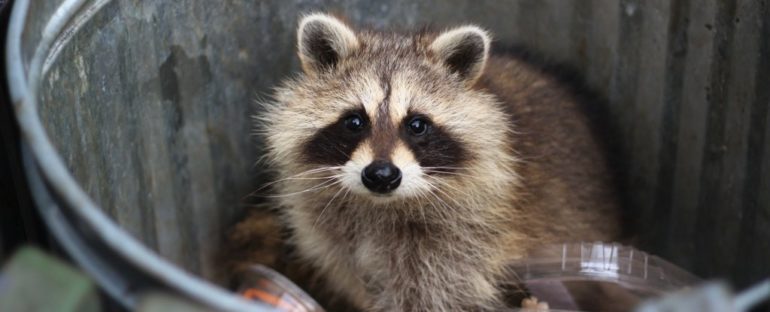Human activity has shrunk the size of wild animals the world over, and yet recent research has found many mammals living near cities have become steadily larger, both in length and in weight.
The findings are unexpected. Sprawling urban environments, with their vast swathes of sun-soaked cement, can grow much hotter than natural habitats, and warmer temperatures usually benefit mammals that have a smaller, more energy efficient stature – a principle of biology known as Bergmann’s rule.
As the world grows warmer, some scientists have worried that mammals living near cities are doomed to grow smaller, possibly reducing their fitness as a species and, no doubt, the fitness of their predators, too.
But even with climate change, that might not happen. As it turns out, there’s another factor in determining a mammal’s size that might rival or even exceed temperature, and that is food.
In and around cities with dense populations, where high-calorie human scraps are more widely available and predators are fewer and farther in between, new research discovered that most of the mammal species studied – such as coyotes and raccoons – appear to be growing in size, not shrinking.
That extra bulk has been noted before by both scientists and members of the public. Yet the reason or reasons why have rarely been explored.
According to careful measurements of more than 100 species from North America, gathered from museum collections over the past 80 years, the main reason is not a city’s temperature.
Instead, the greatest increases in weight and body length appear to lie among those mammals that live near the most humans, regardless of how hot their surroundings are.
As climate change grows worse there is, of course, the possibility that that might change, but at least for now, it seems wolves, coyotes, deer, rodents, bats, ands other mammals in North America could be impacted more by city populations than city climates.
“That wasn’t what we expected to find at all,” says Robert Guralnick, who studies biodiversity informatics at the Florida Museum.
“But urbanization represents this new disturbance of the natural landscape that didn’t exist thousands of years ago. It’s important to recognize that it’s having a huge impact.”
And that huge impact appears to be balancing out any shrinkage from rising city temperatures. From previous studies, researchers expected most mammals to grow smaller as temperatures rise.
Even hibernating mammals should be impacted by the outdoor temperatures, despite spending a lot of time underground. In fact, the size of these mammals seemed to shrink more dramatically in simulations.
“We thought species that use torpor or hibernation would be able to hide from the effects of unfavorable temperatures, but it seems they’re actually more sensitive,” says biologist Maggie Hantak from Florida Museum.
“This paper is a good argument for why we can’t assume Bergmann’s Rule or climate alone is important in determining the size of animals.”
The simple rule that Bergmann created might be considered too simplistic. Outside of mammals, the picture gets even more complicated.
While some studies have shown the urban heat island effect can also impact insects, like spiders, shrinking their overall body size, other research on moths and butterflies in cities suggests they are growing larger, not smaller. What’s more, the cause is probably not temperature. Instead, researchers think sprawling landscapes tend to favor larger wings.
“When we think about what’s going to happen to mammalian body size over the next 100 years, a lot of people frame that as global warming causing animals to get smaller,” says Guralnick.
“What if that isn’t the biggest effect? What if it’s that urbanization is going to lead to fatter mammals?”
The authors hope their findings will lead more researchers to add urbanization to their analyses of changing body size. They suggest comparing the size of animals around cities to those in rural areas, where human food is also readily available.
A study like that would help determine whether it is human scraps and leftover resources that have made city animals so much bigger over the years, or if something else is at play.
If we want to preserve the mammals that exist today for the future, it’s important we know how human civilization is shaping their size, behavior, and well-being. In a rapidly changing world, that knowledge could mean the difference between ongoing life and extinction.
The study was published in Communications Biology.



